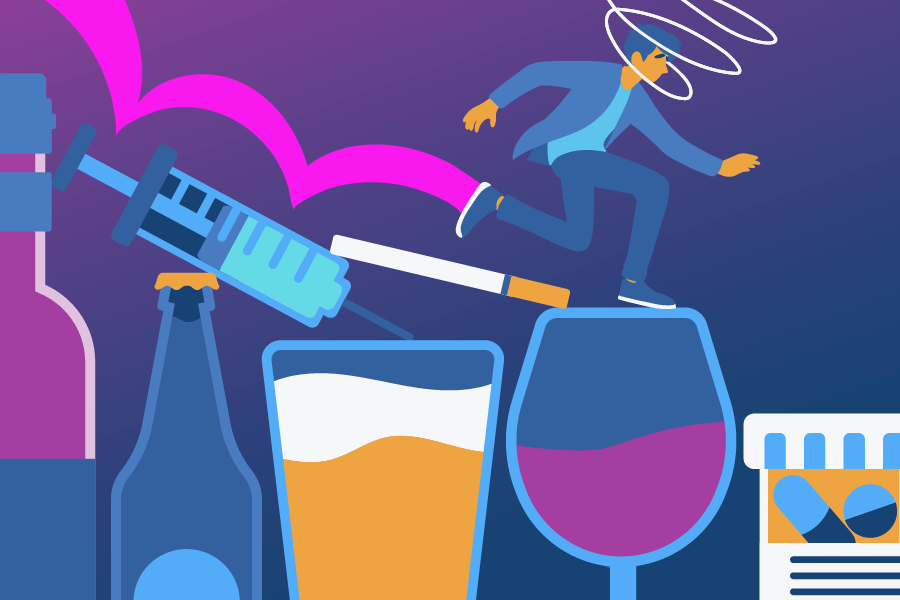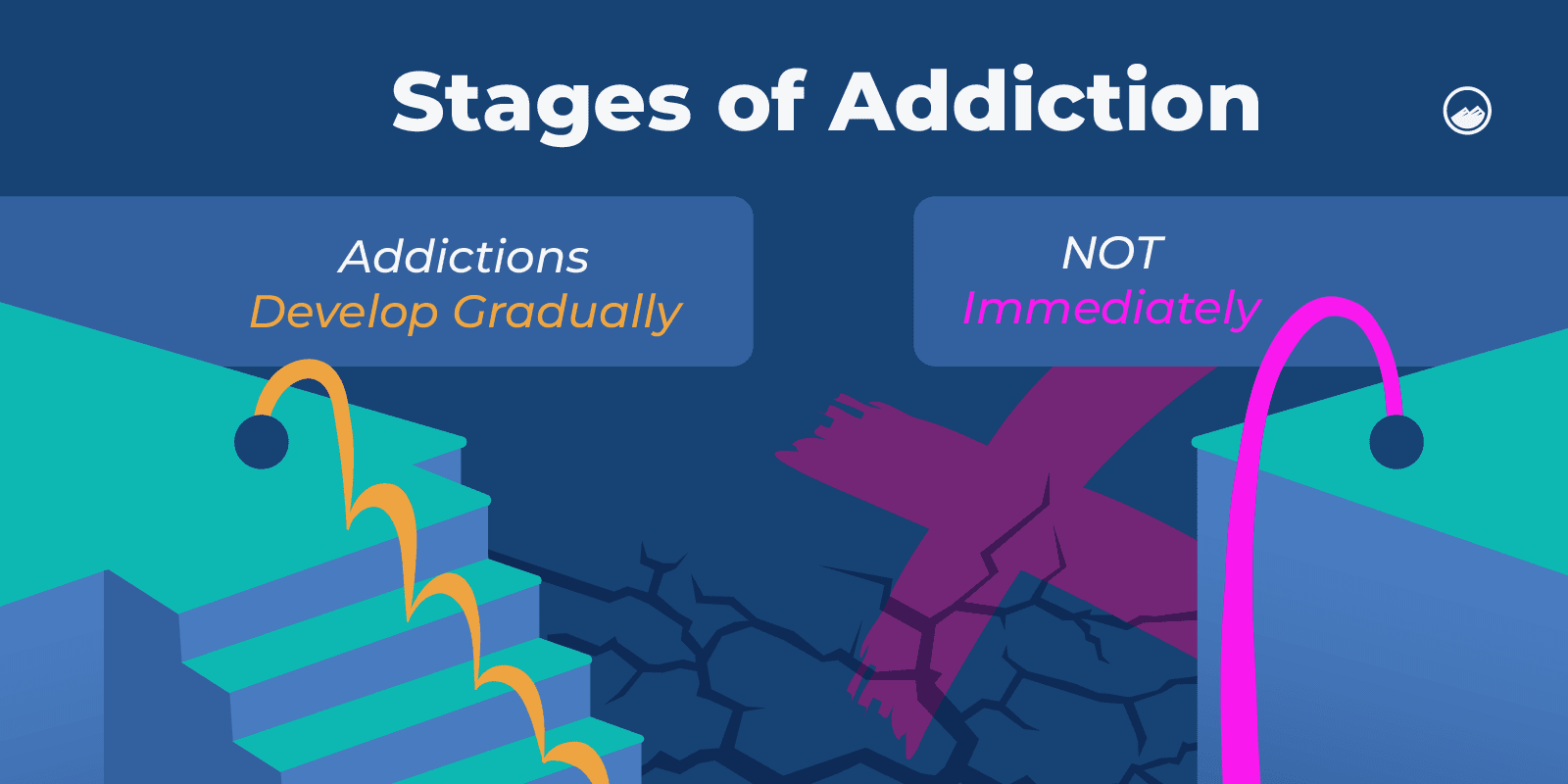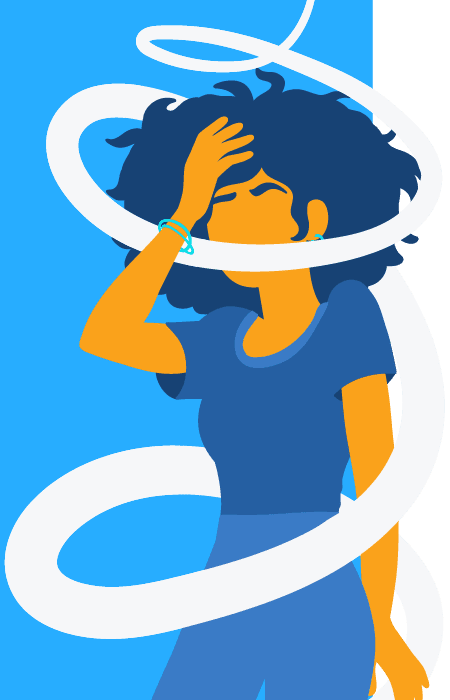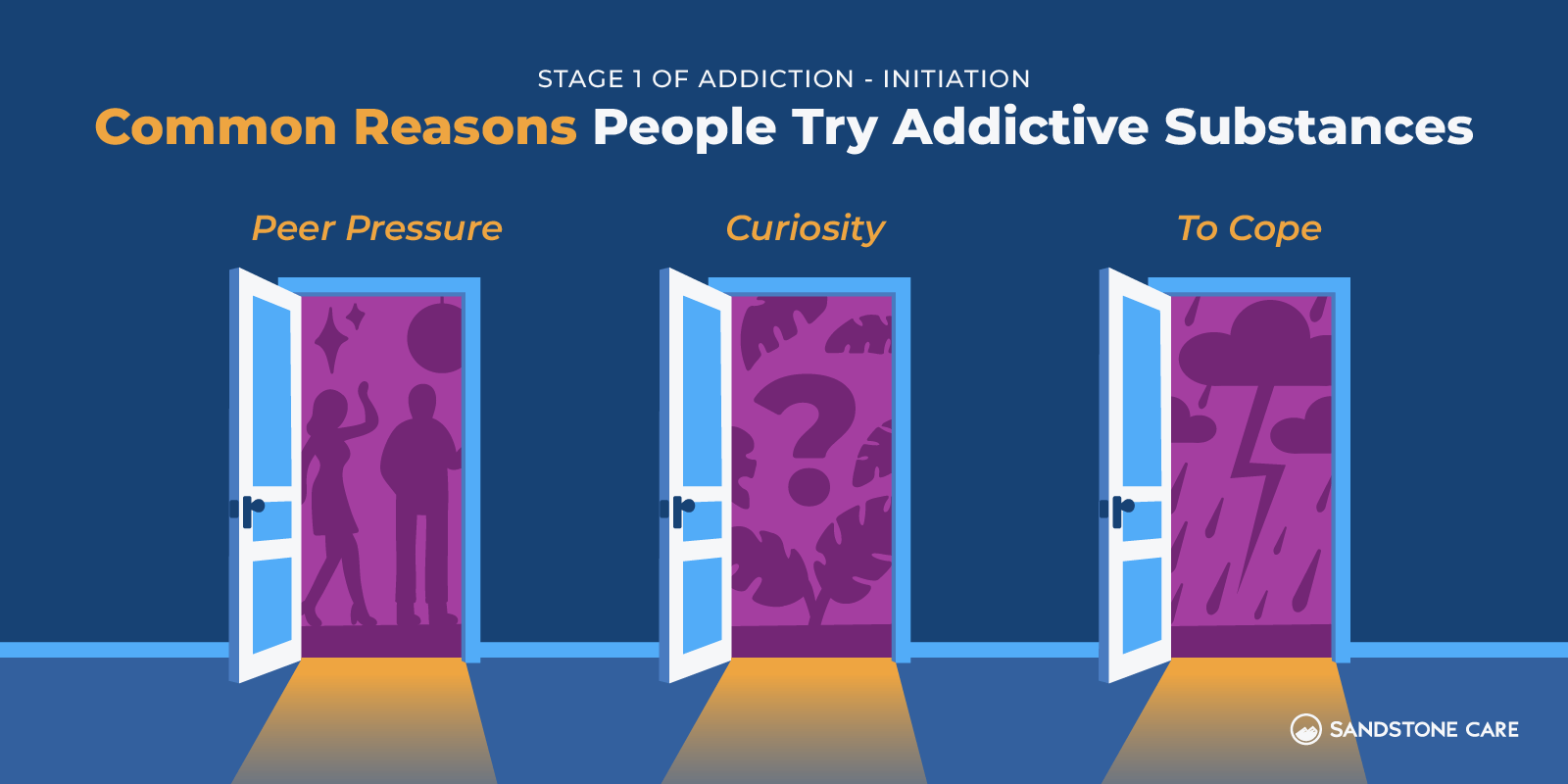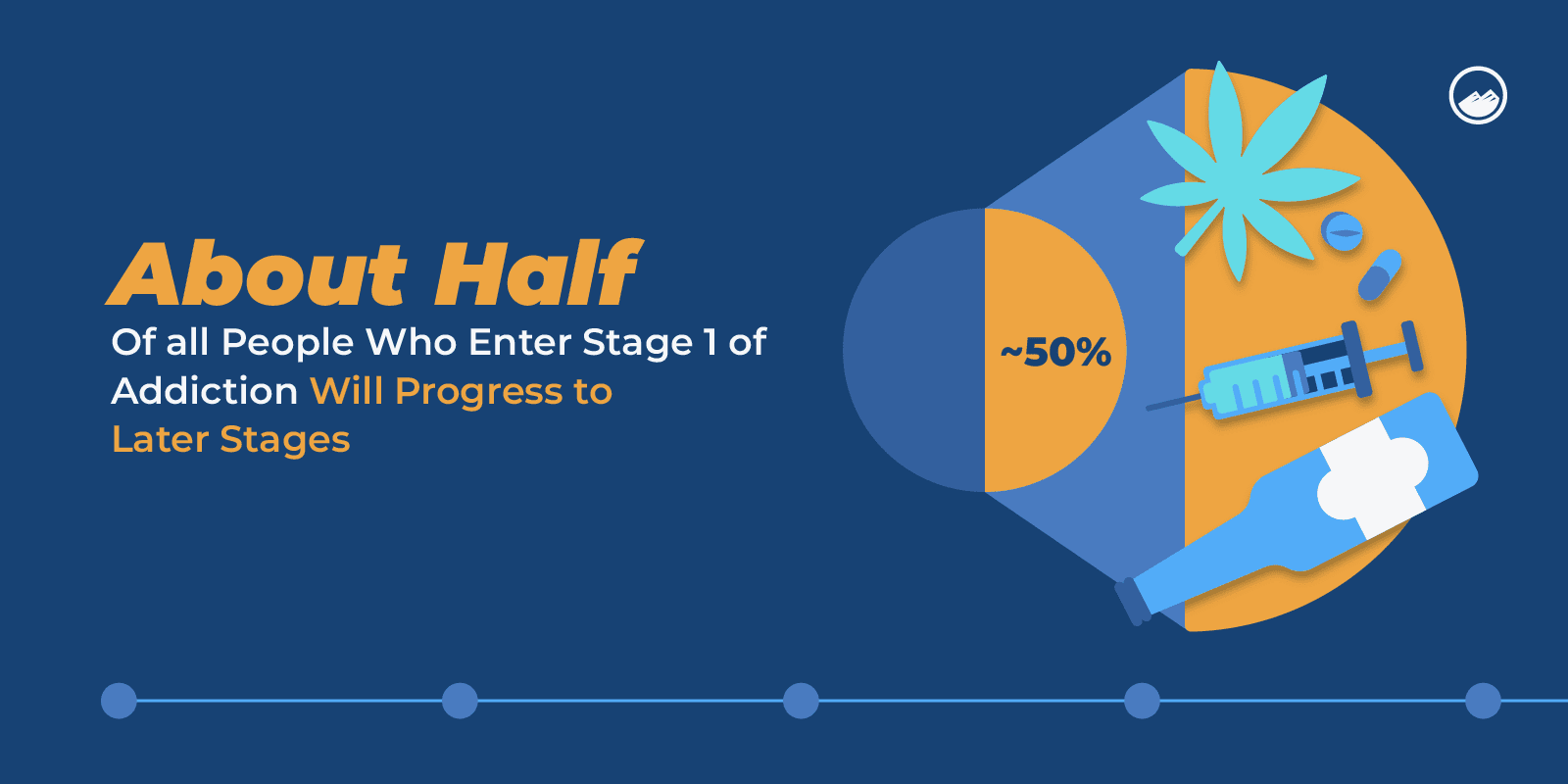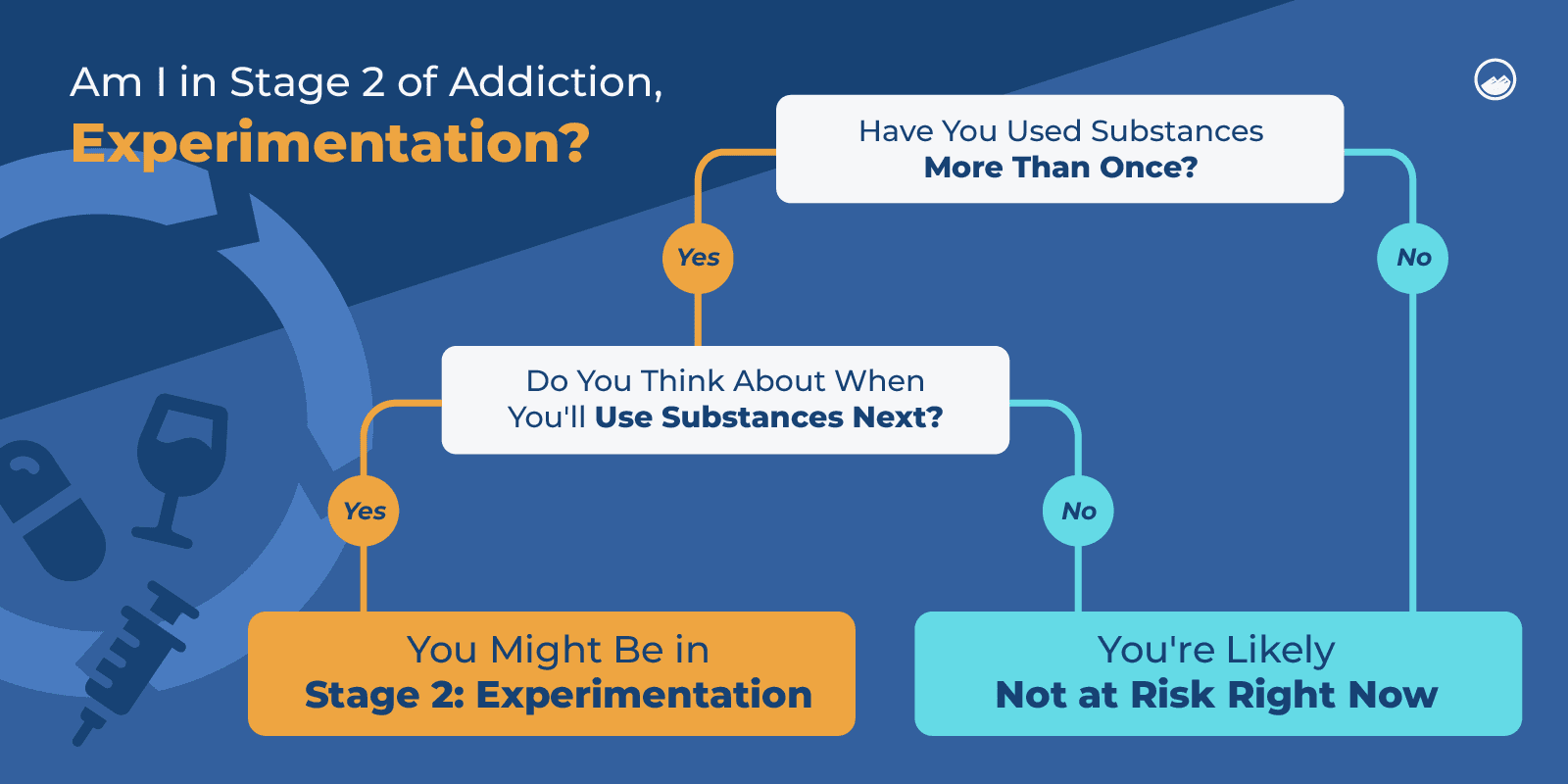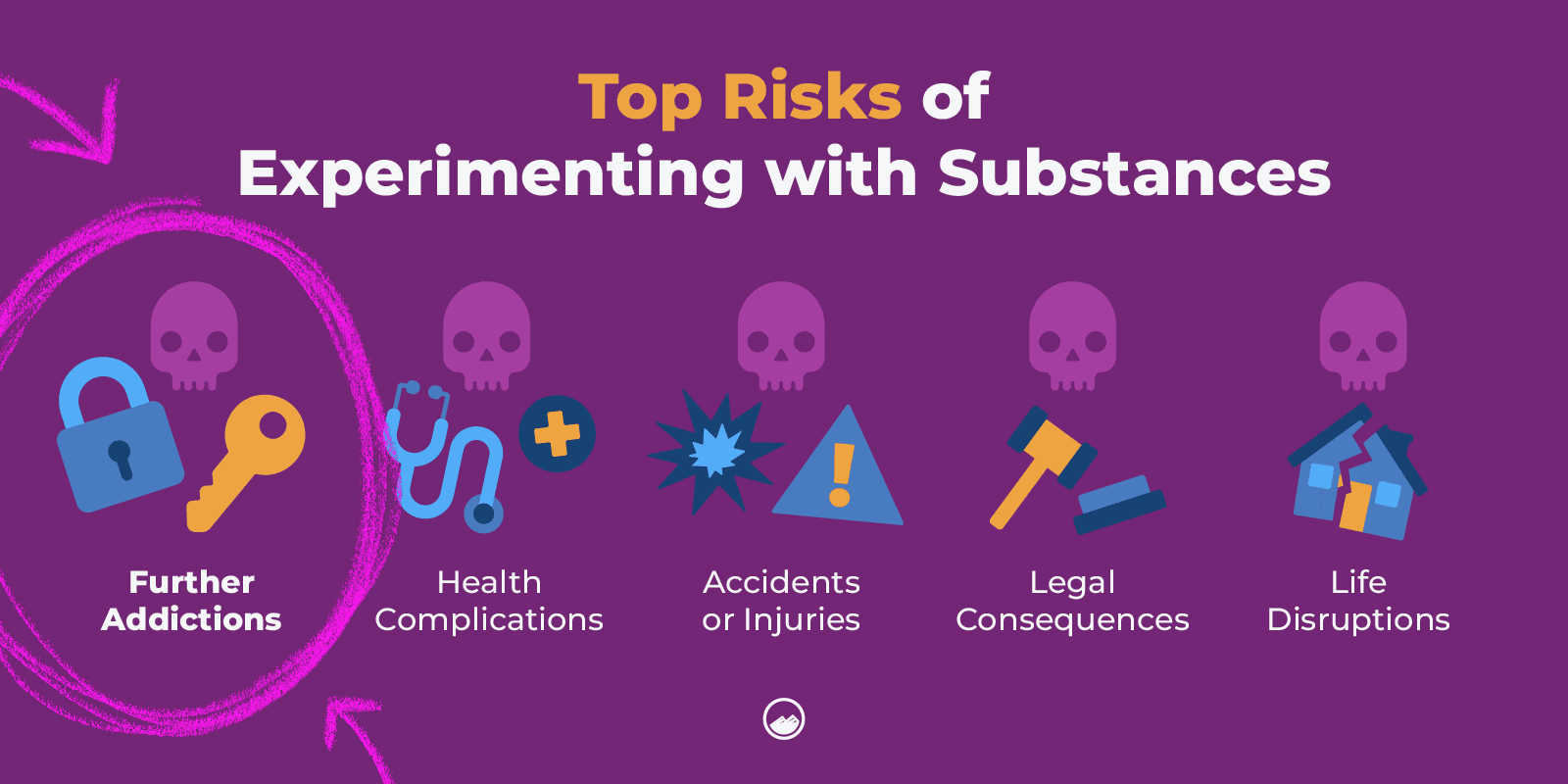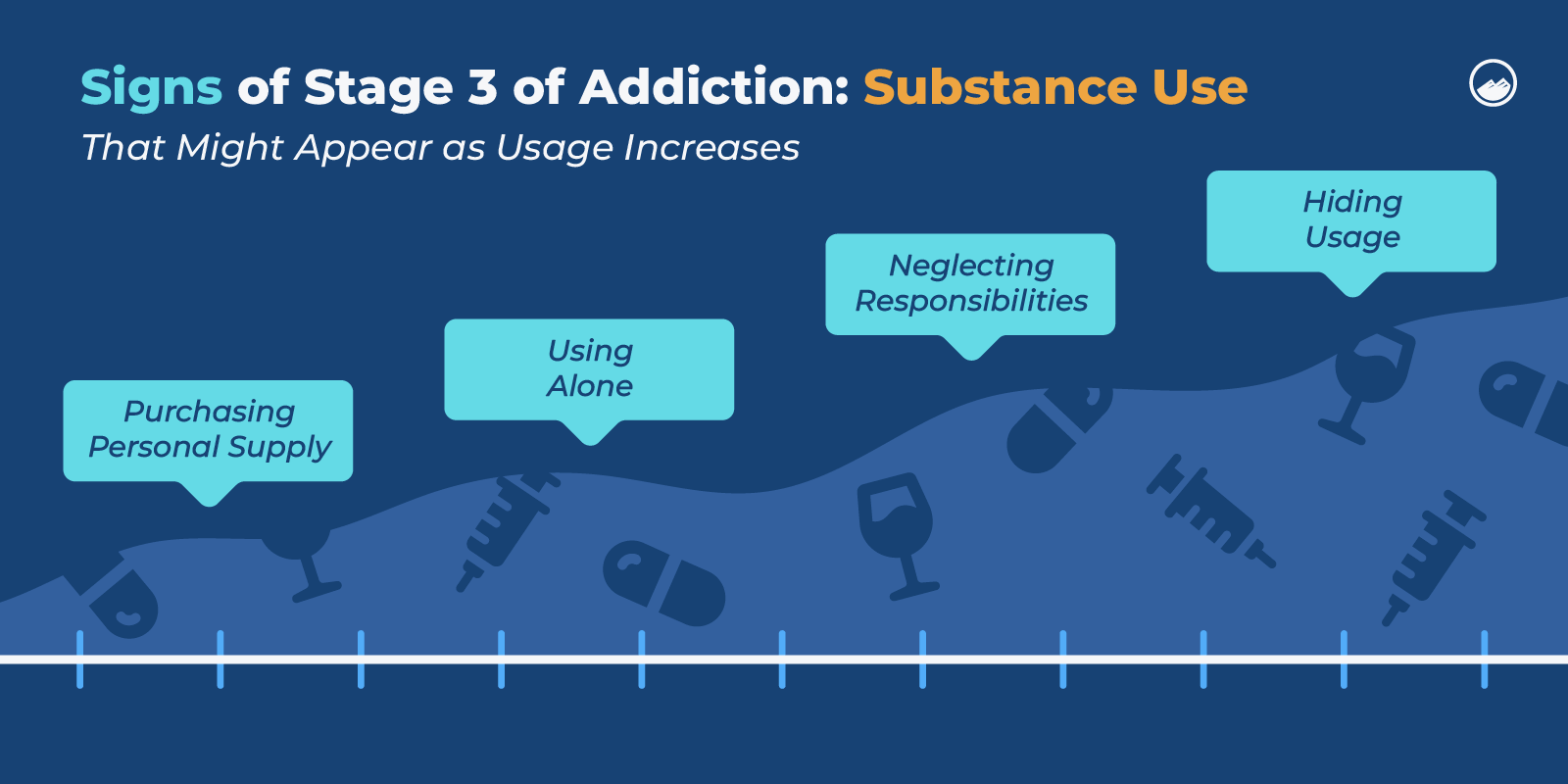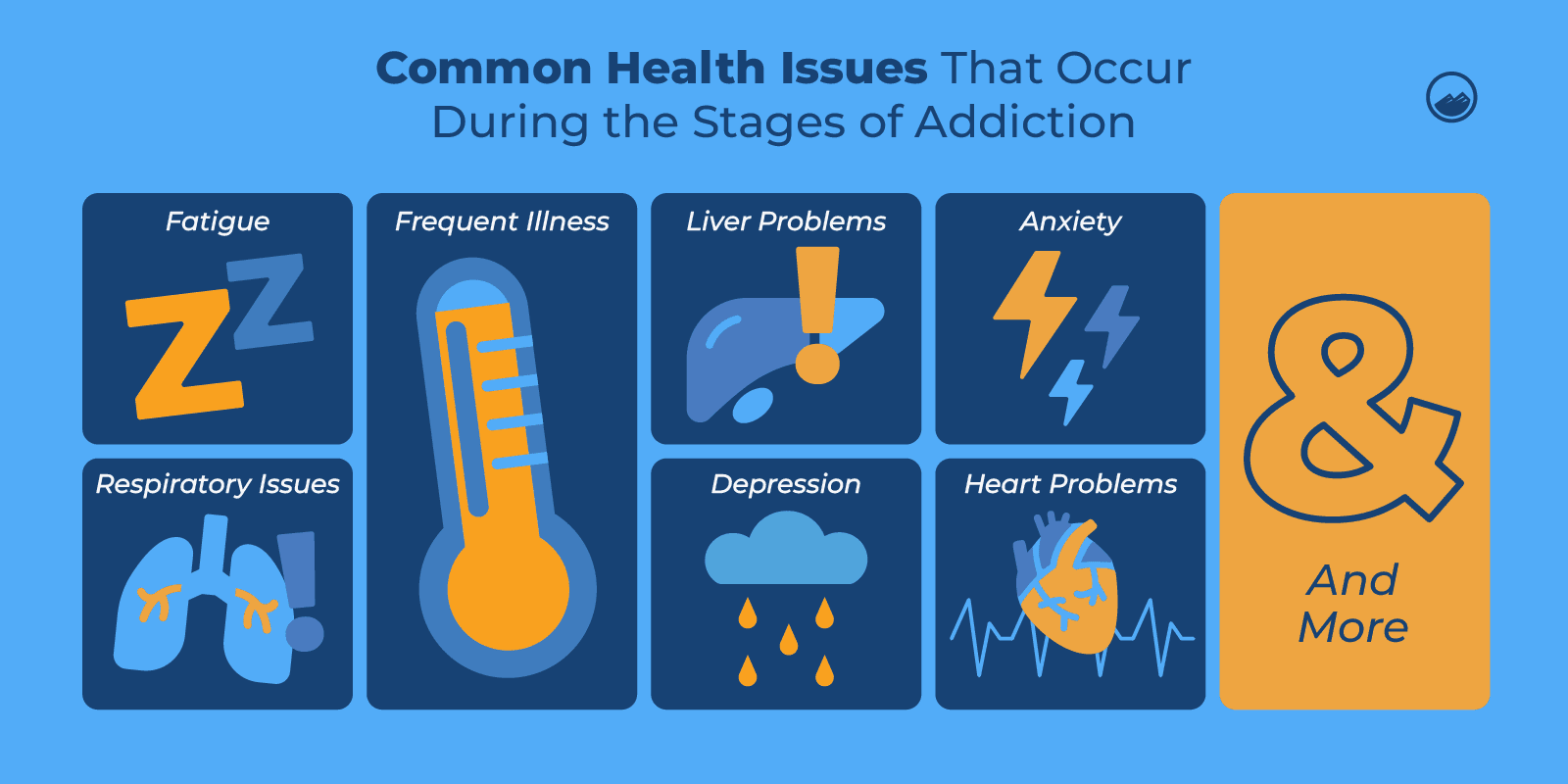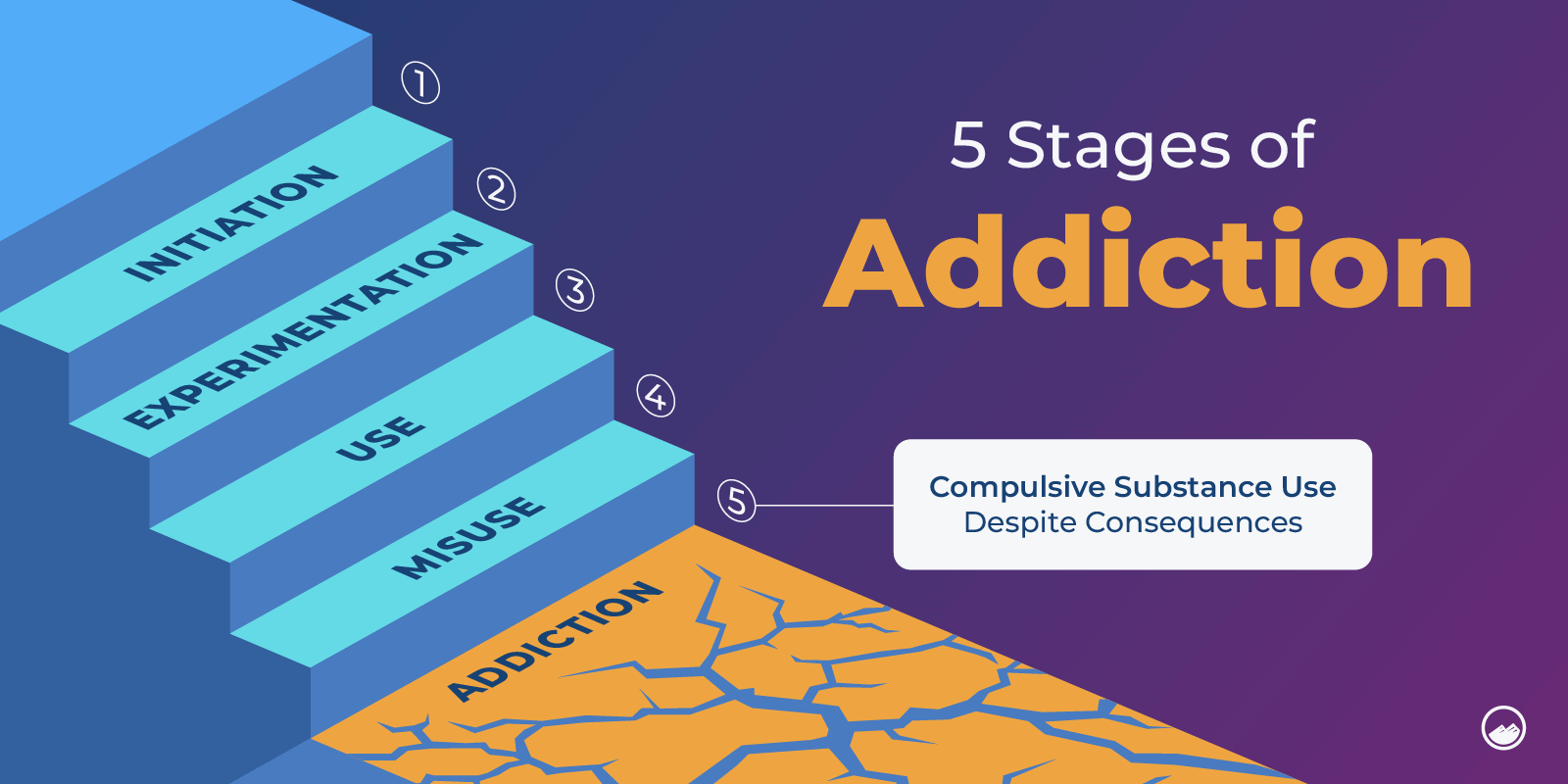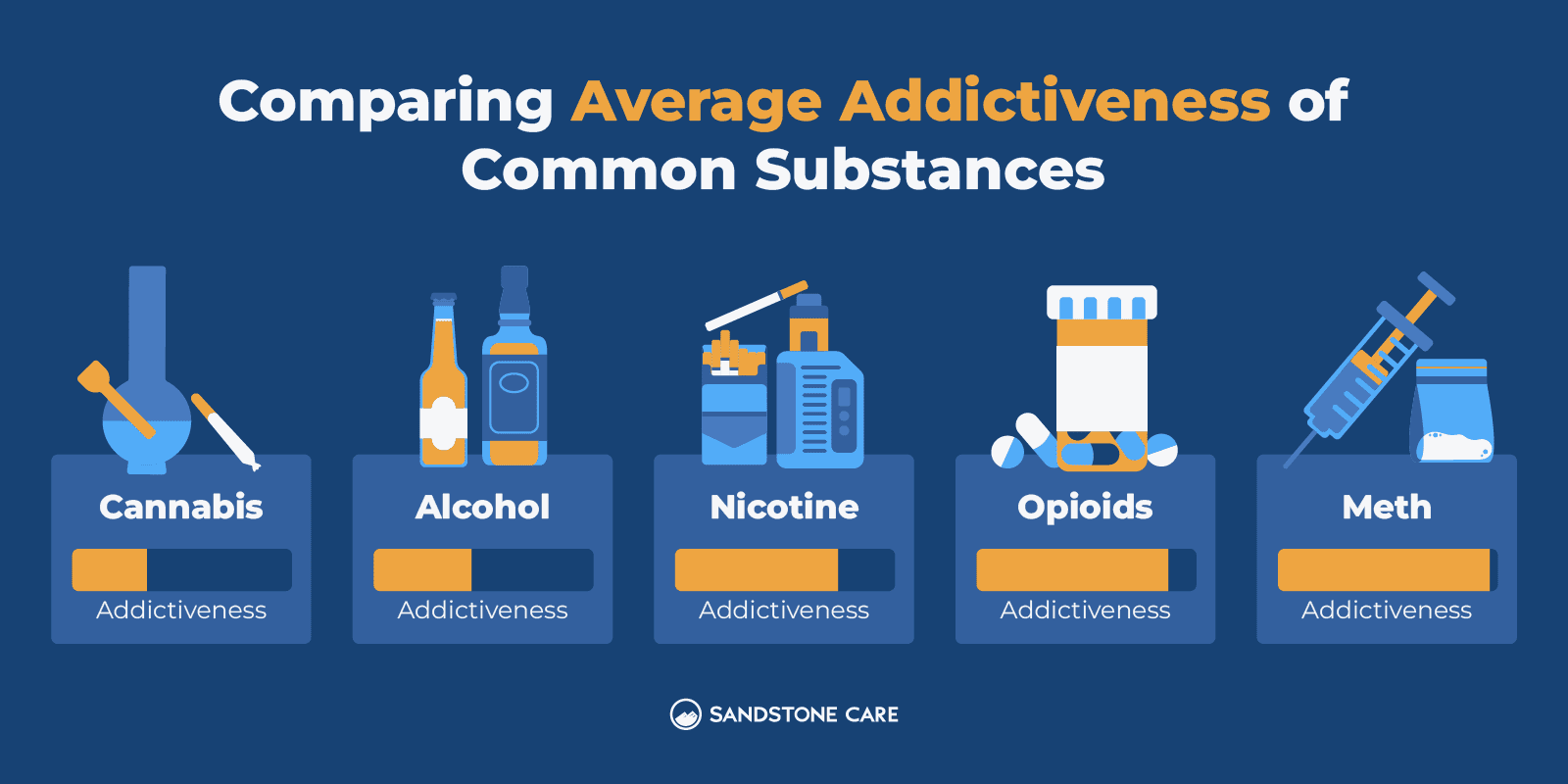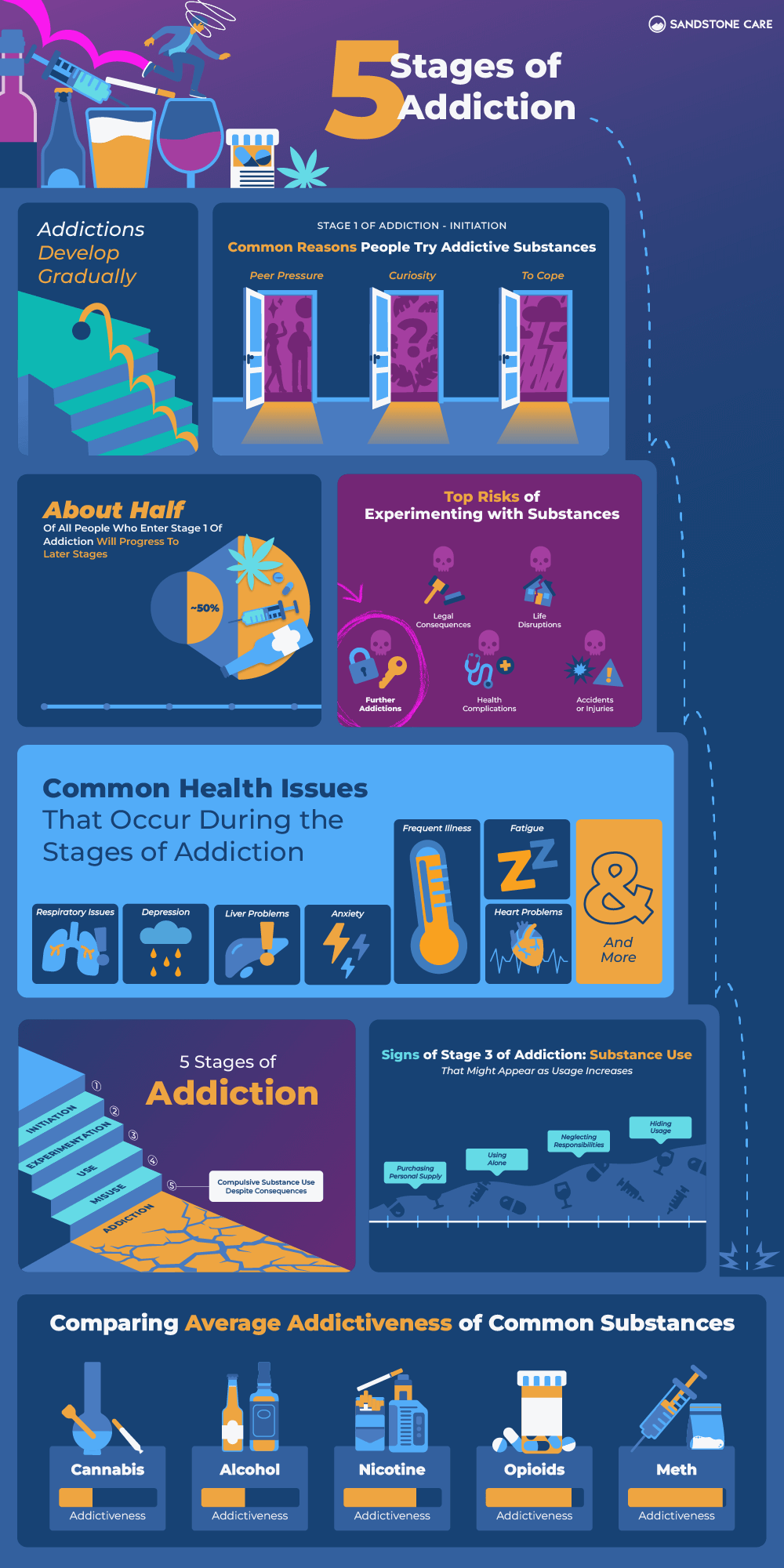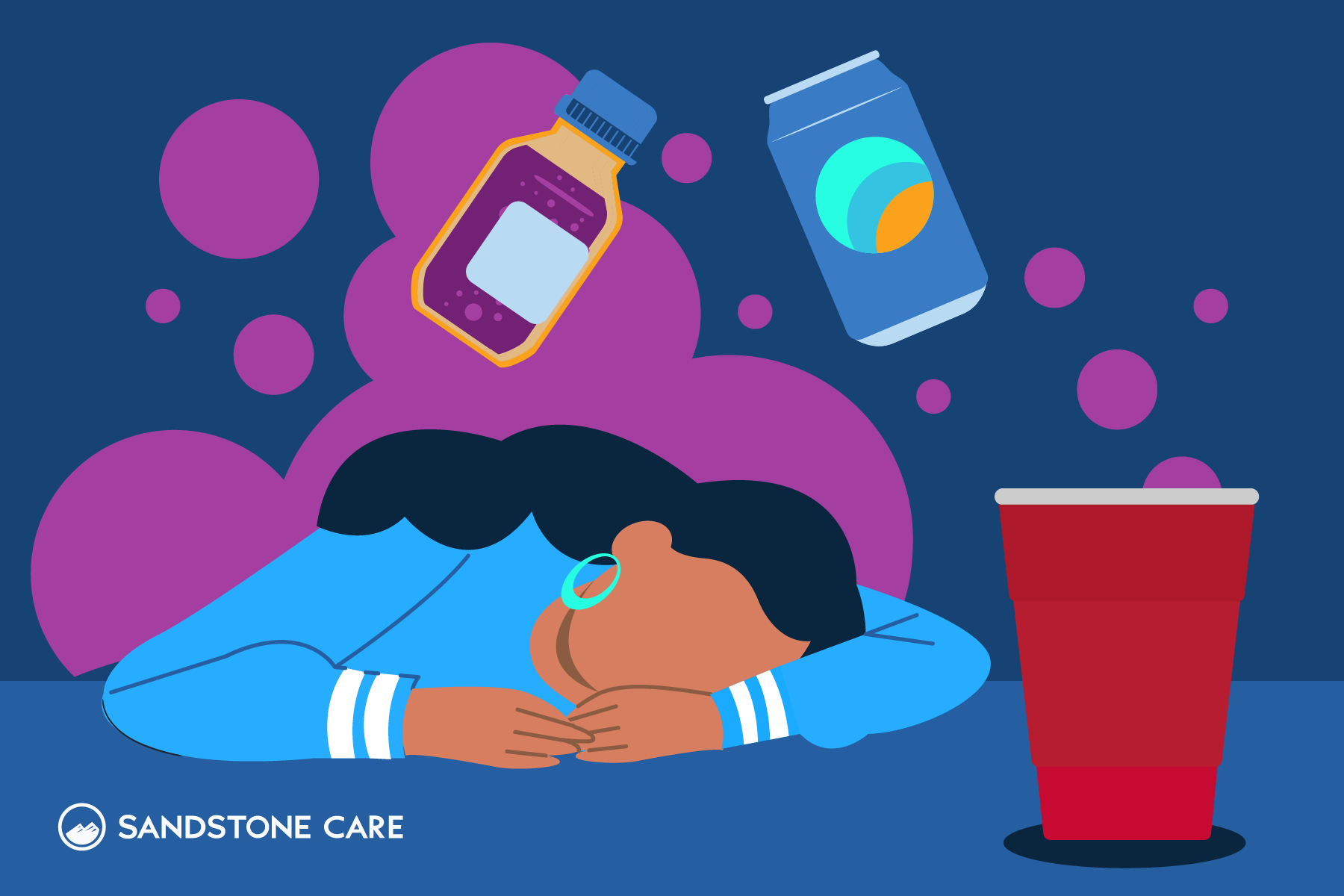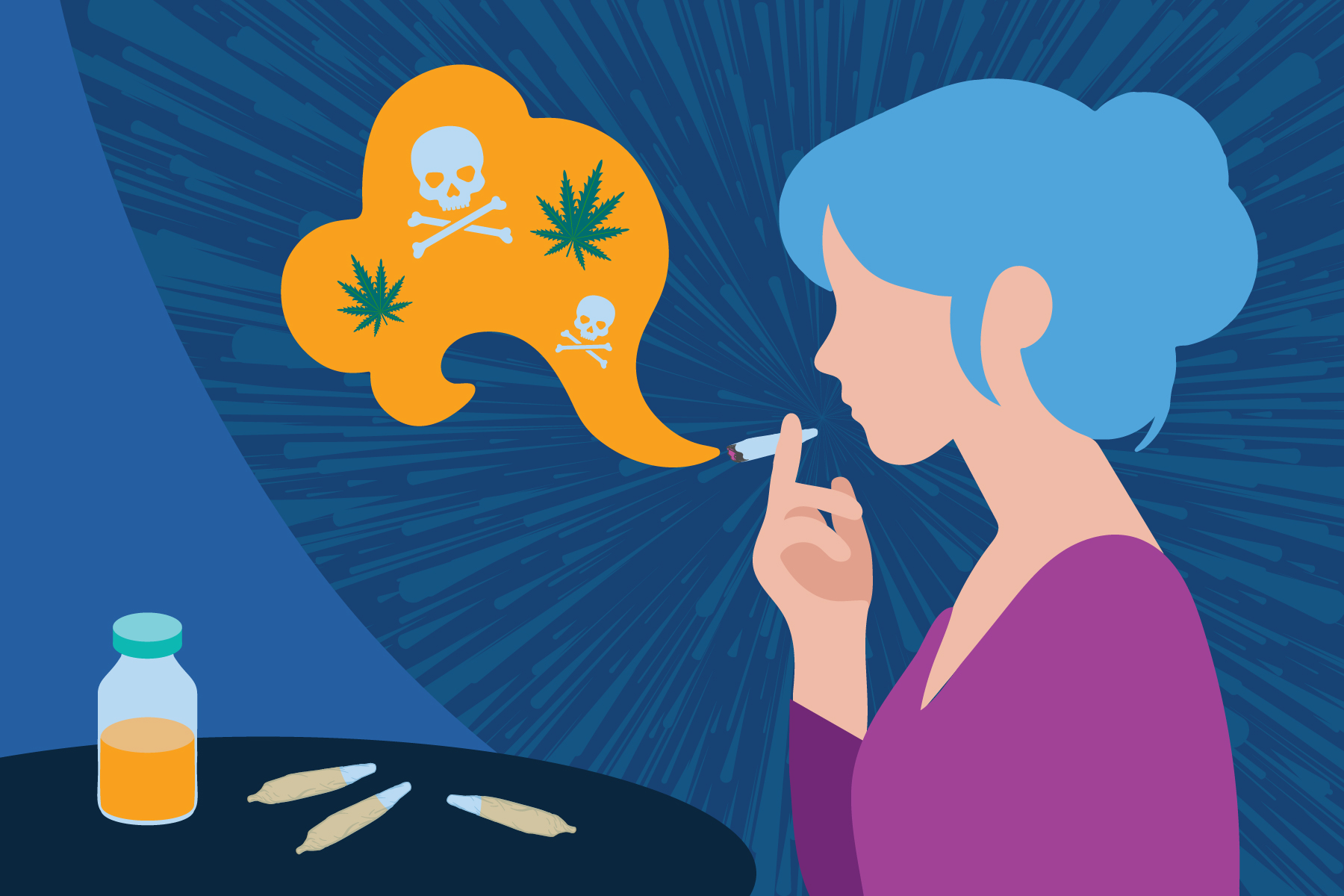Navigating the Stages of Addiction
Addiction is a chronic disease that affects every part of daily life, from a person’s mental and emotional health to their physical well-being, behaviors, and relationships.
However, addiction also develops over time through different stages. It isn’t something that sets in suddenly. Knowing the signs and stages of the addiction cycle can help you recognize when to begin looking into substance use disorder (SUD) treatment for yourself or somebody that you love.
What Are the Stages of Addiction?
The stages of addiction are initiation, experimentation, use, misuse, and finally, addiction.
Each of these stages of addiction has several unique signs and effects on a person. For some, recognizing the development of addiction in the early stages can help a person address their alcohol or drug use before the final stage of addiction develops.
Others may use this information to find the most personalized addiction treatment program for their healing. Many people may not necessarily recognize when they have moved from one stage of addiction to the next stage of addiction.
Even those who have recognized they have a substance use problem may not recognize the extent of their dependence. This may cause them to continue with their risky use of drugs or alcohol despite the development of mental health disorders, or other negative consequences.
The First Stage of Addiction: Initiation
Substance use disorder and full-blown addiction develop over time.
However, an individual must be introduced to addictive substances in some way for the addiction cycle to begin.
What Is Initiation in Addiction?
Initiation is the first stage of the development of addiction and is when an individual is first introduced to addictive substances.
For many, this can be their first use of drugs or alcohol. This usually results in pleasurable feelings that are euphoric and enjoyable to the user.
This could be the high that comes from smoking marijuana, the buzz from drinking or even the joy of purchasing a new pair of shoes. In this phase, the brain learns that these “feel good” experiences are related to a particular substance or behavior.
Several external factors often inform this stage. Peer pressure, overuse of prescription medications, misinformation, or curiosity can all inform a person’s decision to try drugs or alcohol for the first time.
The effects of stress and mental illness combined with the accessibility of drugs or alcohol, can lead an individual to explore alcohol use, marijuana, opioids, prescription drugs, and more.
At this stage of drug use, an individual does not meet the criteria for diagnosed addiction. However, a person’s relationship with addictive substances should still be carefully monitored to ensure that such use does not develop into regular use, drug abuse, alcohol abuse, or another addiction.
How Does Addiction Start?
Alcohol addiction, drug addiction, or any substance use disorder all begin with a single, first-time use of drugs or alcohol.
Having a positive experience with addictive substances, fueled by peer pressure, stress, or other sources, can create a dangerous perception of substances as innocent, or even helpful. They can even cause an individual to ignore other risk factors or negative consequences of use.
For some, a single-use may not expand into the development of an addiction. In fact, some people never progress past this first stage. However, for others, it can be the beginning of a long journey with addictive substances, depending on personal risk factors, environmental stresses, genetic predisposition to addiction, and more.
The timeline for introduction can vary greatly; most children know what alcohol and gambling are at a young age and some adults have never heard of the drugs that teens and young adults take.
How Long Does The First Stage Of Addiction Last?
For some, the first stage of addiction can last a single day or only while the effects of drugs or alcohol are directly affecting them.
Some people may never move past the first stage of addiction. However, those who are vulnerable to addictive behaviors may move to stage two after a very short period of time.
Stage Two: Experimentation
The second stage of the development of addiction is experimentation. This stage addresses those who have been introduced to drugs or alcohol as they begin to further explore their use and its effects.
What Is Experimentation in Addiction?
Experimentation is when an individual who has already been initiated into potential drug or alcohol use begins to explore their use in other areas of daily life.
An individual may begin to use addictive substances in new situations or scenarios. For some, this can be beginning to use drugs or alcohol in more than social settings or without the influence of peer pressure.
This second stage of addiction is also where an increase in risk-taking behaviors and risky use can become more common. they may not only experiment with new situations but also with what kind of drug use or alcohol use they can engage in without getting caught or facing consequences.
What Is an Example of Experimentation?
Experimentation can take many forms, and there are many ways in which an individual may further their drug or alcohol use beyond this stage.
While experimentation can sometimes be viewed as natural, it’s important to know that some substances, like inhalants, can be fatal the first time they are used.
Some may engage in the use of drugs or alcohol in more situations, like using their substance of choice to relax after a long day, to cope with stress, or to further add to social situations like parties, gatherings, and more where substances weren’t necessary before.
Those using prescription drugs may also begin to use larger doses to experiment with its effects. Others may experiment with different ways to take a drug, such as injection or inhalation.
Experimentation can also describe not just the use of drugs or alcohol in more situations or circumstances but can also describe the curiosity around other substances.
For example, while a teenager might only be pressured into drinking by their friends at a party, in the experimentation stage they may begin exploring other drugs, such as marijuana, to find new effects.
How Long Does the Second Stage of Addiction Last?
The second stage of addiction has no defined timeline because each person experiments with substances in their own way.
An individual may spend a long time not just experimenting with new substances but also with new situations, acceptability, and more. There is no set time limit on how long this second stage of addiction will last.
Rather, it is more important to pay attention to the behaviors associated with this stage, from addictive behaviors to an increase in risky use, as well as paying attention to a person’s mental and emotional health.
Can You Experiment With Substances and Not Become Addicted?
Yes. During this second stage, an individual may still not yet meet the qualifications for a diagnosed addiction or substance use disorder.
However, that doesn’t mean that there still are personal repercussions of use during this stage. An individual may not experience withdrawal symptoms or cravings yet, but they may still deal with social, academic, or legal consequences because of their substance use.
Stage Three: Use
The third stage of addiction describes regular use of drugs or alcohol, with their use becoming an expected routine in their daily life.
An example of a culturally accepted form of use is the drug caffeine: many Americans drink coffee every single day. Others are written prescriptions for drugs that they take on a daily basis, another culturally accepted form of drug use.
What Is the Third Stage of Addiction?
The third stage of addiction is “use”, where someone begins consistently using drugs or alcohol.
While an individual may not necessarily engage with drugs or alcohol every day, there may be the development of a pattern or regularity of use. For example, an individual may use alcohol after difficult workdays or expect drug use whenever going out with friends or at social events.
This is also the stage where tolerance will begin to develop, requiring more and more of a drug or alcohol to achieve its desired effects. Likewise, this stage of addiction is also where family members or loved ones may recognize the increasing regular use of addictive substances.
In teen brains, the neural connections are still being formed and substance use at this point can create pathways of reward-seeking and dependence that are easily entrenched later in life.
Many begin to experience the first signs of drug and alcohol dependence during this stage.
When Does Experimenting Become Substance Use?
Experimentation becomes substance use when drugs or alcohol become a consistent part of someone’s routine.
For example, somebody who first experimented with alcohol to help them cope with difficult emotions, may start using alcohol at the end of every difficult work day.
Thoughts of engaging with drugs or alcohol can become more common, and an individual may even develop routines based on the use of drugs or alcohol.
For example, someone who is experimenting with nicotine may begin storing packages of cigarettes in their car when they previously only needed them to be at home.
Those in the third stage of addiction may also further explore the use of addictive substances on their own, without the input of peers or family members. While this stage is still not associated with full-blown addiction, it does mark the beginning of unhealthy use of drugs or alcohol.
Can You Use Drugs and Not Be Addicted?
Different factors such as genetic predispositions, the addictive potential of the substance, or mental health conditions, can make that tidal wave much more difficult to fight.
For example, Heroin and opioids can be more addictive than some other substances, and those with conditions like depression are statistically more likely to self-medicate through alcohol.
While it is possible to engage with a drug without becoming addicted to it, it is a different process for every single person and there is no single way to guarantee you can use a drug without becoming addicted.
Another important disclaimer is that even if you see someone engaging with drugs or alcohol without showing any signs of addiction, that does not mean the drug is in any way “healthy” or without negative consequences.
Stage Four: Misuse
The fourth stage of addiction is misuse, also known as risky use or dependence.
This stage is where those engaging with addictive substances will see drastically increased use of drugs or alcohol, as well as experience several consequences. They may also begin feeling a loss of control of their use throughout their daily life.
It is also the stage when an individual may require substance abuse treatment, such as a dedicated detox program, to stop using substances.
What Is the Definition of Substance Misuse?
Substance misuse is any kind of routine behavior that involves the use of addictive substances despite the harm it is doing to oneself or those around a person.
Misuse can impact every aspect of daily life. From relationships, to career goals, to passions and social groups. Families and other loved ones are also victims to the damage caused by addictive substances.
Substance misuse is when an individual may not only routinely engage in drugs or alcohol but will also do so despite recognizing its negative effects. An individual may even experience a dangerous increase in risky behaviors despite increasing consequences.
This stage of addiction is also where physical dependence can develop. An individual may not be able to take pleasure in past hobbies, interests, and goals and instead may tie their levels of happiness and the release of dopamine in the brain directly to the use of drugs or alcohol.
They may feel like they have to use a drug or take a drink before they are able to feel happy or relaxed. At this stage, it becomes increasingly difficult to break out of the cycle since the addiction has replaced every other type of motivation and reward.
Those in this stage of addiction or their family members may benefit from contacting a dedicated treatment center to explore potential treatment options and support groups.
What Does Substance Misuse Look Like?
Substance misuse can come in a variety of forms, and there are multiple signs that an individual may be in this stage of addiction development.
Misuse can be identified through the developing dependence on drugs or alcohol for happiness and through the beginnings of an isolated lifestyle. An individual may be less likely to attend social events.
Others also begin to neglect responsibilities, become defensive when topics surrounding substance use arise, lose interest in previous hobbies, compromise budgets, or even frequently ask to borrow money or engage in stealing.
During this stage, they will begin to experience mood swings, along with feelings of anger, resentment, depression, anxiety, and more.
What Is the Difference Between Misuse and Addiction?
Addiction describes not just the harmful effects of substance use but couples them with a complete loss of control, while those who are misusing drugs may still maintain some control over their use.
While it is paramount to address substance misuse, it does differ from addiction. Even if an individual recognizes they would benefit from ceasing their use, in both misuse and addiction it becomes increasingly difficult to do so on their own.
Stage Five: Addiction
What Is the Fifth Stage of Addiction?
The fifth stage of addiction is full-blown addiction, where the use of drugs or alcohol is no longer just affecting daily life but dictating many of the routines, feelings, and decisions of each given day.
This stage of addiction is also described as a point where an individual may continue to engage with drugs or alcohol against their own better judgment or even against their own will.
Many of those who are in this stage are no longer using their substance to feel its effects, but because they feel it is necessary for them to be able to function.
They also experience physically and emotionally draining withdrawal symptoms any time they try to cut back the amount that they are using. At this point, the brain’s wiring may have been distinctly altered to a circuitry based on reward and fulfillment possible only through the particular substance or behavior.
How Do You Know When You Are Addicted to Something?
Identifying addiction on your own can be difficult. Working with professionals at a treatment facility like Sandstone Care can help individuals and families best identify addiction and the most effective treatment options.
When an individual begins to see something as necessary to daily life despite negative consequences, whether it is the use of heroin, marijuana, opioids, alcohol, gambling, or anything else, as well as feeling necessary even when an individual may not actively want to engage, addiction may be present.
Other people, activities, and passions that were a priority in life may be supplanted by the need for the substance and further unhealthy or risky behaviors may develop.
Eventually, addiction can become so powerful that some individuals’ need for the substance or behavior overcomes their ability to care for themselves and death can result.
This stage is also where withdrawal symptoms are most prevalent, along with daily urges, cravings, or other compulsions to continue using these substances.
How Long Does It Take to Become Addicted to a Substance?
It can take anywhere from a few weeks to years to become fully addicted to a substance. The length of time it takes to become addicted is unique to each person.
It can depend on the frequency, intensity, substances used, environmental factors, and availability of addictive substances all factor into how quickly an individual can move through the stages of addiction.
Can a Habit Turn Into an Addiction?
Yes. Habits can develop into addiction, especially if the signs of addiction are not recognized in previous stages.
When bad habits are left unaddressed, addiction can take hold.
When someone becomes addicted to a substance or behavior, it can be nearly impossible for them to break out of their dependence on their own. This necessitates the need for professional treatment programs like those available at Sandstone Care.
How Long Does Addiction Last?
Addiction is a chronic disease for which there is no “cure,” so there is no firm timeline on how long addiction lasts.
It can continue to affect daily life until it is professionally addressed. Even those who have navigated a treatment program and are maintaining their sobriety will still be tasked with navigating urges, cravings, and other challenges in daily sober life.
Recovery is a process and an ongoing journey, with detox, residential care, outpatient treatment, and more all being instrumental in helping each person maintain their sober change in recovery.
Recovering from Addiction
Addiction is a difficult disease to overcome, especially on a person’s own. Working with treatment facilities, peers, and family is necessary for a truly comprehensive and effective approach to recovery.
How Do I Recognize What Stage Of Addiction I Am In?
Looking at how often you use substances, how much you take, and what your expectations are when you use them can help you to determine what stage of addiction you are in.
It is also important to be honest with yourself about how severe the consequences around your substance use has become.
Dedicated treatment professionals are also instrumental in being able to objectively address a person’s relationship with drugs or alcohol, especially when their judgement may be clouded from the brain’s desire to use.
Where Can I Get Treatment for Substance Use?
Researching local options, the amenities and opportunities of various treatment facilities, and more are all relevant ways to find treatment for substance use.
Sandstone Care offers not just multiple locations but also a wide array of various treatment and therapeutic options to ensure that each person has the best approach to personal needs for effective treatment.

